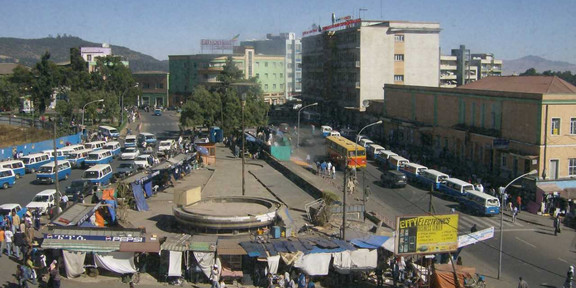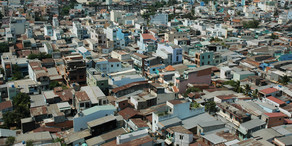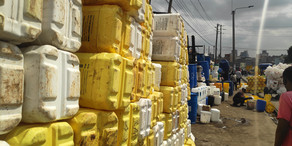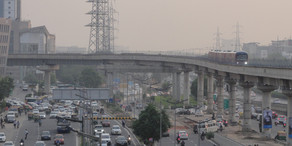Call for paper: Infra-spacing African Urban Futures beyond “Concrete” visions
- Archiv
- Forschung
- Fachgebiet

Call for paper on Infra-spacing African Urban Futures beyond "Concrete" visions for panel by Sophie Schramm and Genet Alem at the ECAS2023 Conference "African Future" in Cologne, Germany
Urban infrastructure networks are ambivalent. They allow for the flow of people and goods - they enable movement, access and connection. Simultaneously, they may also disconnect and isolate - African urban dwellers who are displaced or evicted for the construction of large infrastructures admit the ongoing rush to build and experience this reality every day. In this panel, we approach this ambivalence of urban infrastructures from the perspective of people, places and economies that may be marginalised and at the same time at a central position through contesting spaces produced by urban infrastructures. Planning visions and ongoing infrastructure projects are often fixated on an idea of infrastructure as made of concrete and steel, the very hardware of orderly urbanism while disregarding marginalised and seemingly disorderly people, trades and places. However, such infrastructures produce a variety of spaces beyond such "concrete visions" that people may appropriate beyond the scope of formal planning and design. We focus at such spaces produced at the interface of intended and unintended uses along large infrastructure networks. Such spaces emerge, for instance, along road corridors, where dynamic service points emerge that target pedestrian and passengers of motorised vehicles in the congested peak hours' traffic and at the nodes of traffic lights. The panel discusses the different possibilities in which urban dwellers may engage with the ambivalence of infrastructures and the prospects of emerging dynamics of infra-spacing as forces shaping urban Africa. It also discusses the implication of such spaces for future planning endeavours and urban citizenship.
For further information and to submit paper please click here







![[Translate to English:] [Translate to English:]](/storages/ips-raumplanung/_processed_/5/3/csm_Nairobi_2021_Green_Skyline_Moritz_Kasper_private_19748667af.jpg)